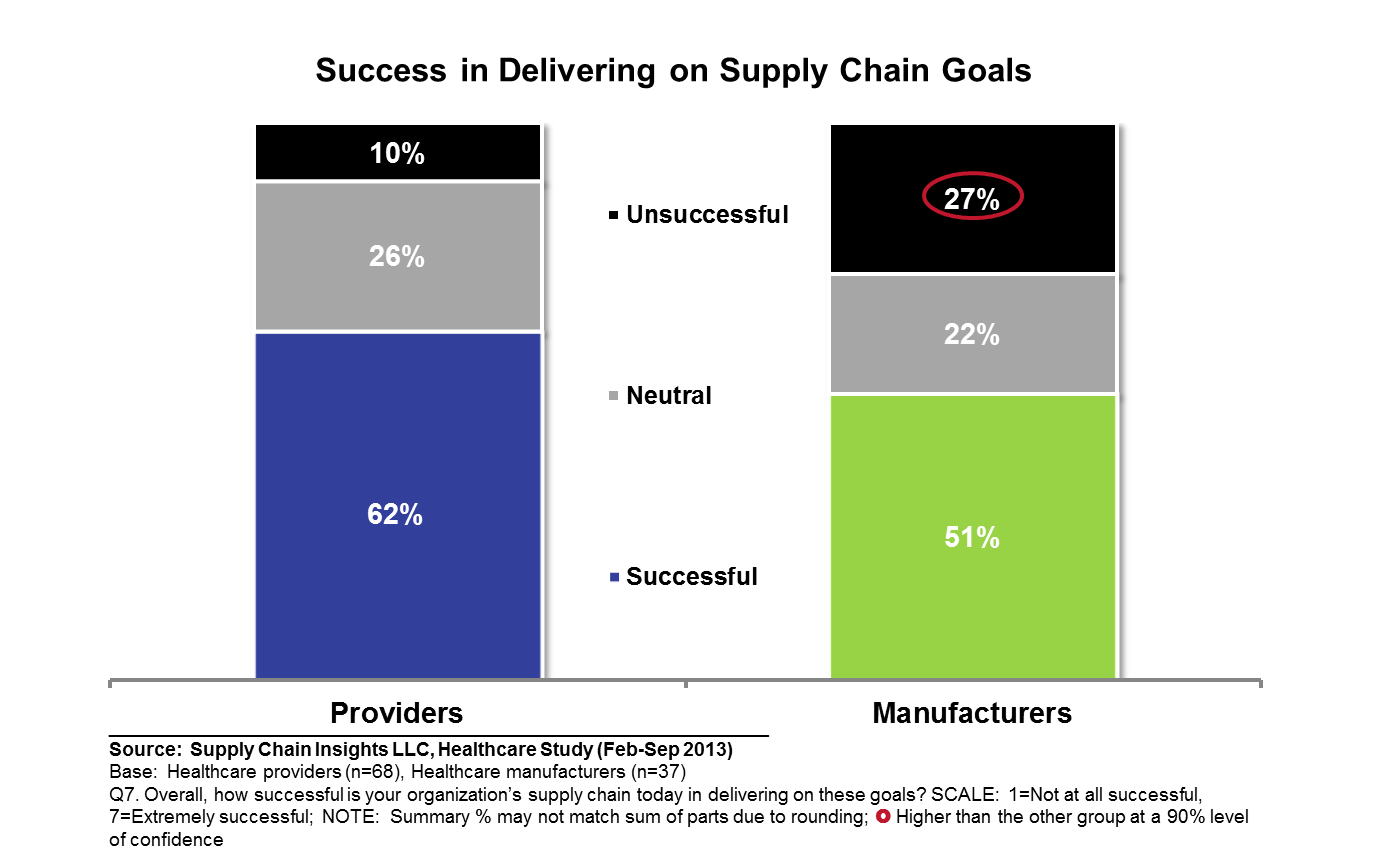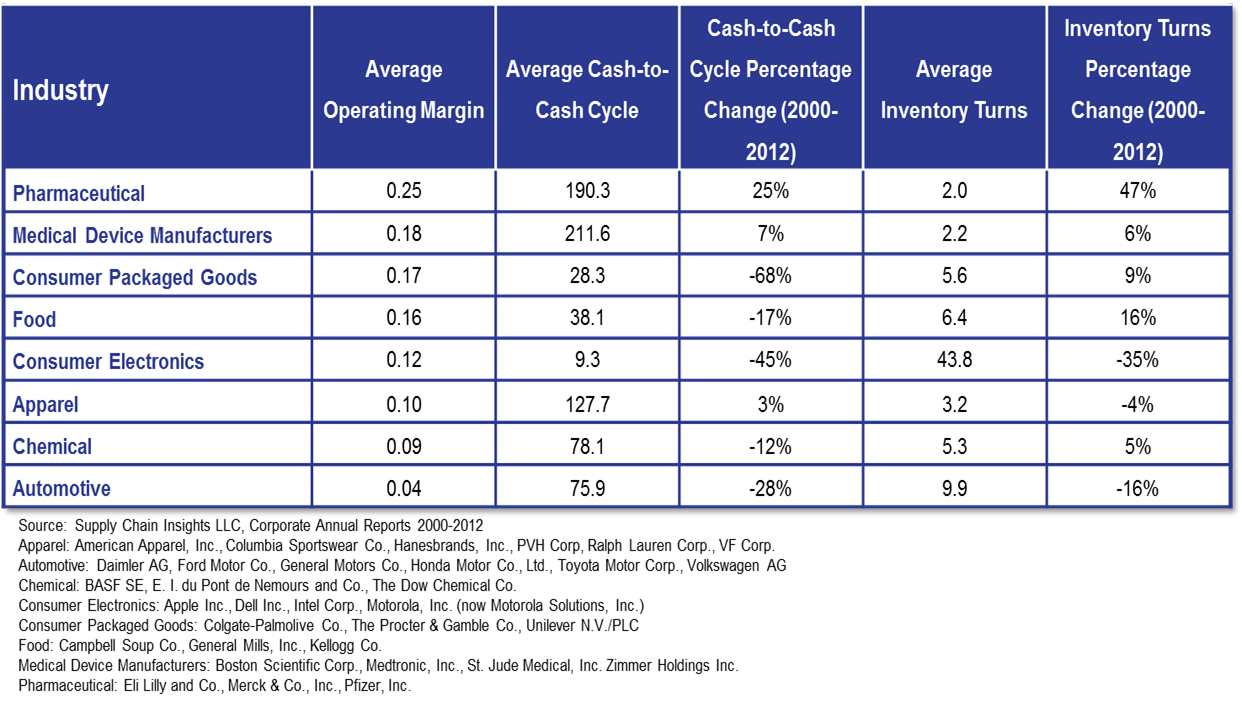Improving Relationships Within the Healthcare Value Chain
Article by Lora Cecere from Supply Chain Shaman; published on October 15th 2013

The healthcare provider network is fragmented. As the power shifted from the supplier to the healthcare provider, over the last decade, the healthcare provider responded. The hospital built a supply chain organization that is now viewed as stronger than that of its suppliers. Today, providers of healthcare self asses that they are more successful meeting their goals than the supplier.
The supplier, or healthcare manufacturer (pharmaceutical or medical device) in the healthcare value chain is three times larger than the provider. They have four times the profits. However, in our recent study on healthcare, the supplier rates themselves 15% less successful than healthcare providers in their ability to deliver on their supply chain goals. Here are the highlights from our recent study:
 1) Rising Complexity. Nearly two-thirds of manufacturers are offshoring to reduce costs. They have longer more complex supply chains, but rate themselves low on their ability to plan demand and manage a network.
1) Rising Complexity. Nearly two-thirds of manufacturers are offshoring to reduce costs. They have longer more complex supply chains, but rate themselves low on their ability to plan demand and manage a network.
2) Enterprise Alignment. Only 1/3 of suppliers feel that they can effectively integrate their supply chain and sales processes within their own organization. This is a barrier to forming a successful value network..
3) End-To-End Focus not in Sight for Suppliers. Two out of five manufacturers report that they have someone responsible for the end-to-end supply chain. For the supplier, the focus to move from a supply chain to build a value network is just starting. To focus on the patient, there needs to be a value-chain focus.
4) Stalled Progress on Inventory and Cash-To-Cash Cycles. While hospitals have improved inventory turns by pushing the responsibility backwards onto the supplier, in the last decade, there has been no improvement in cash-to-cash and inventory cycles for the value network. Each party self-assesses their capabilities in demand, supply and network planning at a very low level. There is a need for both parties to step-up and improve capabilities.
So, in the absence of supply chain leadership, the government will step in to try to heal thehealthcare value chain. What they will find is:
1) Value Analysis and Supplier Collaboration Programs by Hospitals Just Starting. Over 70% of healthcare providers now have value analysis programs. They are being used to evaluate new products and services. Sixty-seven percent of companies rate them effective in meeting the goals of managing costs, determining physician preferences and reducing infection rates. However, most of the processes are not about VALUE; instead, they are about cost mitigation. There is a need to align value-based outcomes to serve the patient. The toughest nut to crack is the incentive systems.
2) Business Model Innovation Needed. Unlike other industries, no company in the healthcare value chain has stepped forward to use power to drive business model innovation (E.g. like Wal-Mart in retail or Intel in the semiconductor industry) to significantly improve the end-to-end value chain. This is an opportunity for a company like Eli Lilly or Nova Nordisk. Both of these companies actively provide medications to diabetic patients. The movement to patient sensing and monitoring and direct delivery of services to the patient through better communication and monitoring for the physician is now within our grasp at a technology level. The greater barriers lie in the building of systems and effective networks for patient delivery. The most movement is with CVS and Walgreens.
3) Lack of Alignment on Outcomes. Regulations, taxation and talent are the top three challenges for manufacturers while the top three challenges for providers are costs, inventory, and contract management. Sadly, the patient does not make the list. We are a long way from a focus on value-based outcomes to serve the patient.
If I had a magic wand, what I would like to see happen is:
1) A redesign from the Patient back with a Focus on Wellness. I would like to see us rethink the value network and the delivery systems to focus end-to-end. Since, we are facing government intervention, perhaps a tax credit for big pharma and medical device companies to invest in innovation to use the Internet of Things to focus on real-time patient monitoring to improve wellness?
2) Investment by Manufacturers in Supply Chain Planning. It is hard for companies that have high profit margins to focus on supply chain planning to improve costs, inventories and customer service. With the rise in complexity, it is time for manufacturers to get to work to close the gap between themselves and the other manufacturing industries. Perhaps an audit system on supply chain excellence to get reimbursement levels?
3) Data Sharing on Usage. The management of goods throughout the channel and the sharing of downstream data in a meaningful way can streamline the entire value network. The redesign of these systems outside-in could dramatically reduce costs and improve service.
4) Eliminate Rebates. The healthcare value network has the most antiquated and ineffective system for rebate management. The waste and time spent trying to manage bifurcated trade should be eliminated.
5) Building of Strong Networks for Case Management. I like what GHX is doing on the building of an inter-enterprise system of record for case management for scheduling a patient and the management/tracking of use in the operating room. I would love to see this type of approach be more widely adopted.

